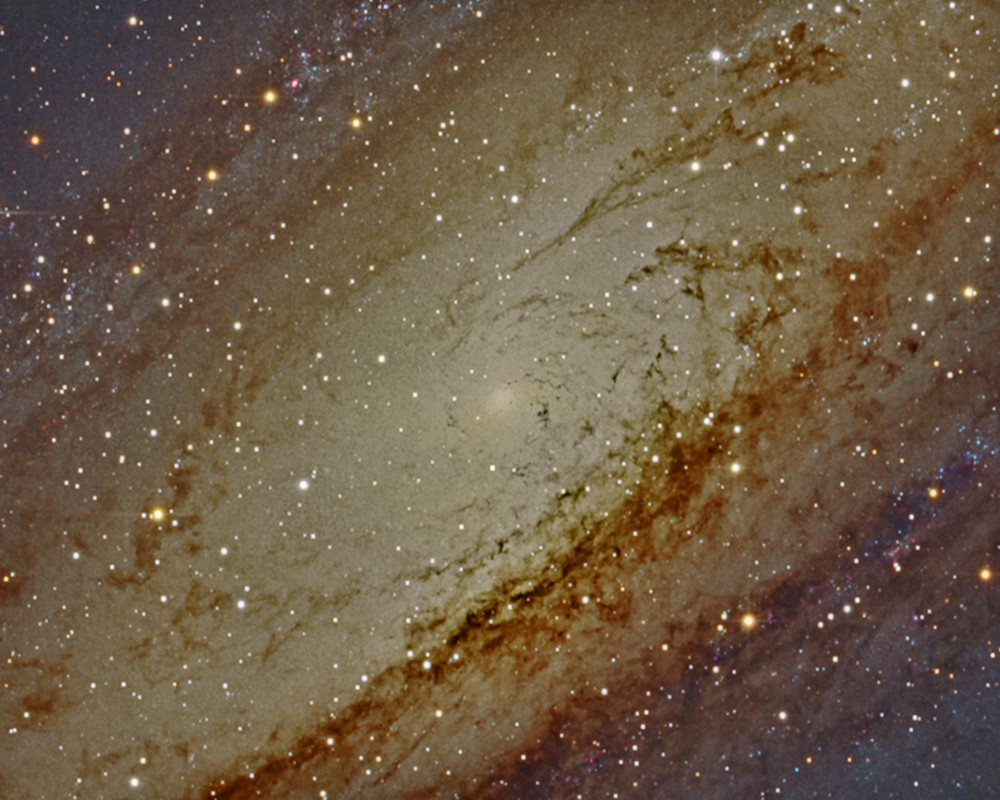Messier 31 - Andromeda Galaxy

MouseOver for object identification, Click on image for a zoomable version
The Core (full resolution, slightly darkened for more contrast):

|
Location / Date |
Zellerndorf, October and November 2011 |
|
Telescope / Mount / Guiding |
5" f5 Skywatcher Newtonian, Skywatcher NEQ6, Baader MPCC, Lacerta OAG + Mgen |
|
Camera / Exposure |
Canon EOS 1000Da |
|
Processing |
Theli, Fitswork, Photoshop |
|
Notes |
The Andromeda Galaxy is a spiral galaxy approximately 2.5 million light-years from Earth in the Andromeda constellation. Also known as Messier 31, M31, or NGC 224, it is often referred to as the Great Andromeda Nebula in older texts. The Andromeda Galaxy is the nearest spiral galaxy to our Milky Way galaxy, but not the closest galaxy overall. The Andromeda Galaxy is the largest galaxy of the Local Group, which also contains the Milky Way, the Triangulum Galaxy, and about 30 other smaller galaxies. Although the largest, the Andromeda Galaxy may not be the most massive, as recent findings suggest that the Milky Way contains more dark matter and could be the most massive in the grouping. The 2006 observations by the Spitzer Space Telescope revealed that M31 contains one trillion (1012) stars: at least twice the number of stars in the Milky Way galaxy, which is estimated to be 200–400 billion. The two galaxies are expected to collide in 3.75 billion years, eventually merging to form a giant elliptical galaxy. Like the Milky Way, the Andromeda Galaxy has satellite galaxies, consisting of 14 known dwarf galaxies. The best known and most readily observed satellite galaxies are M32 and M110. Based on current evidence, it appears that M32 underwent a close encounter with M31 (Andromeda) in the past. M32 may once have been a larger galaxy that had its stellar disk removed by M31, and underwent a sharp increase of star formation in the core region, which lasted until the relatively recent past. Andromeda IV (And IV) might be an irregular satellite of the Andromeda Galaxy; however it is more probably not a galaxy at all, but a loosely bound star cluster or some other background feature. The Cepheid V1 in M31 was discovered by Edwin Hubble in 1923. The star helped Hubble show that Andromeda was beyond our galaxy and settled the debate over the status of the spiral nebulae. The universe became a much bigger place after Hubble's discovery. Published in "Sterne und Weltraum" 10/2014 |